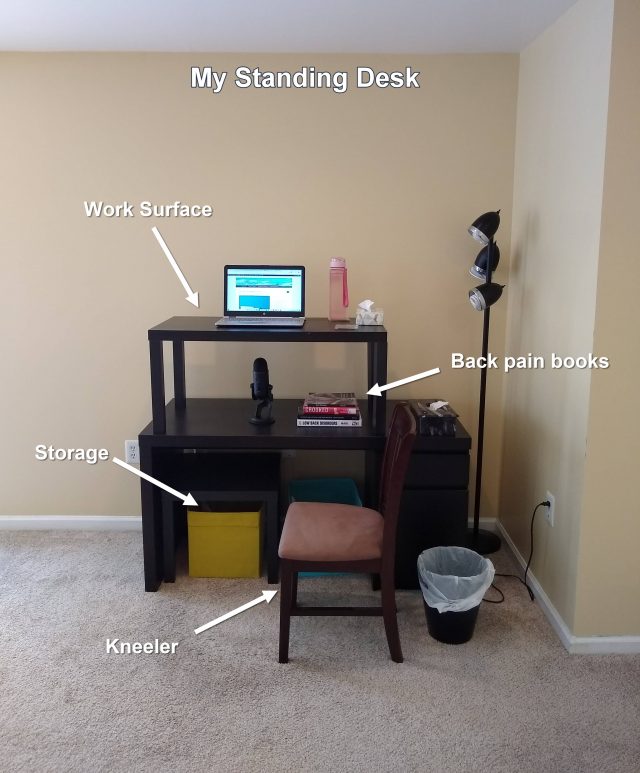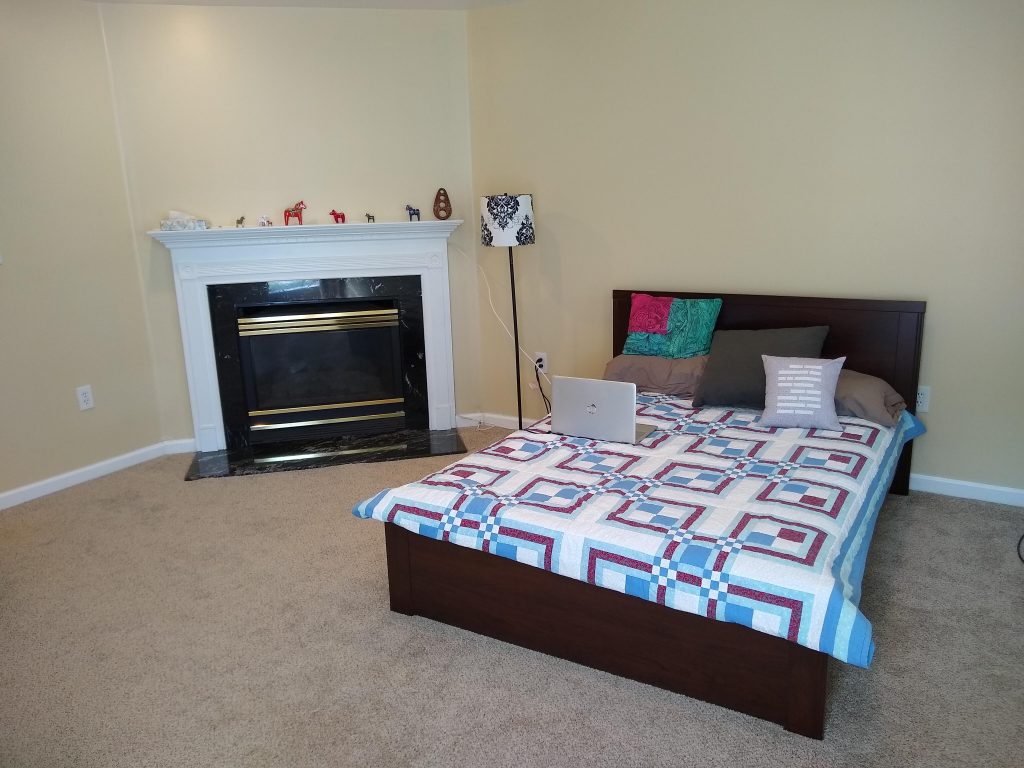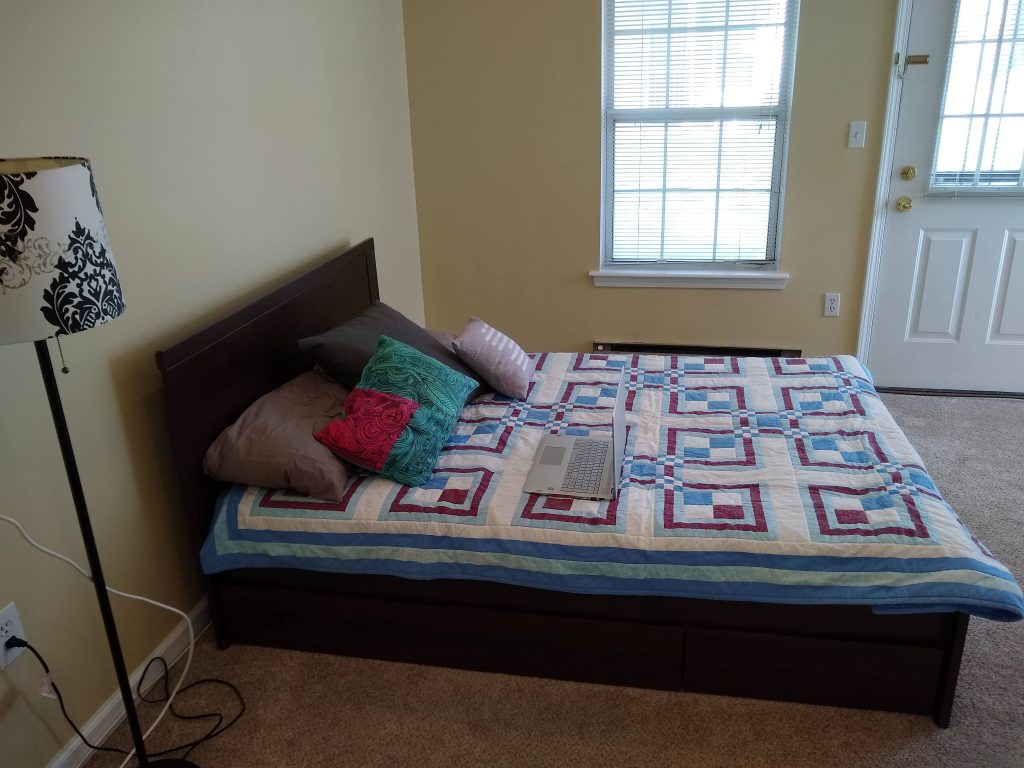Recently, I finished converting the basement room of our house into an office for myself. It was a welcome, but strange, exercise. This room was supposed to be for my sole use. I could create any setup that I’d find comfortable. There was no assumption that anyone would be doing much sitting.
Had I been given a completely blank canvas, I would have been wracked with indecision as I tried to figure out whether a bookcase or dresser would make a better standing desk. But fortunately, my canvas came with an outline on it. The housemate who had recently vacated the room left some basic furniture, and I had some leftover pieces from my old apartment, so the renovation was done at a total cost of $0.
The bed became my primary workstation, once I added my own linens and a suitable number of pillows.
The desk took only slightly more effort. I stacked a cheap coffee table on top of a regular desk (my favorite trick) and made sure there were coasters and Kleenex on it. After a few days, it occurred to me that it was a shame to waste the under-desk space, so I added some dröna boxes from IKEA.
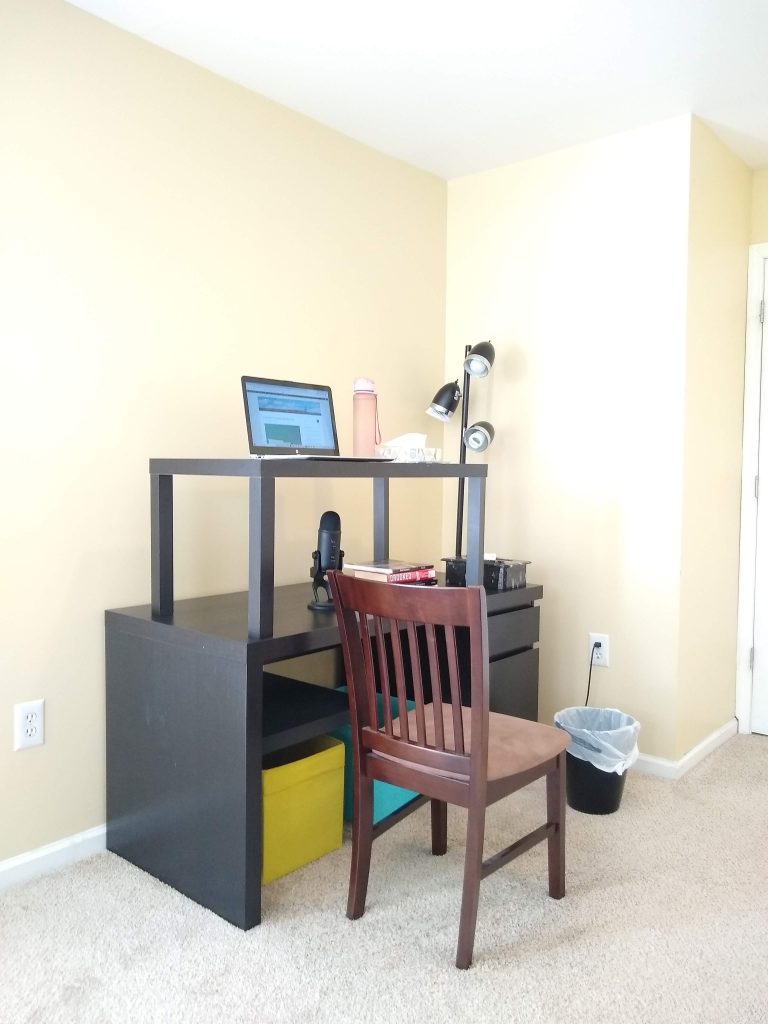
I know what you’re thinking: Something’s wrong with this picture. Isn’t this office supposed to be a no-sitting zone?
The chair looks a little silly to me as well. After all, when I inherited the room from our housemate, the first thing I did was get rid of the office chair. I figured it was about as useful to me as a beard trimmer.
But as I used my desk, it occurred to me that something was missing. When I stood there stock-still, holding video calls or eating breakfast, I got fidgety. I wished there was some way I could kneel, or partially kneel, to take the weight off one leg at a time. Then it dawned on me that what I needed was…a chair.
And so, I recruited one from our dining room set, which I certainly was not using for dining, and turned it into a kneeling pad. During video calls, I’m usually standing like this:
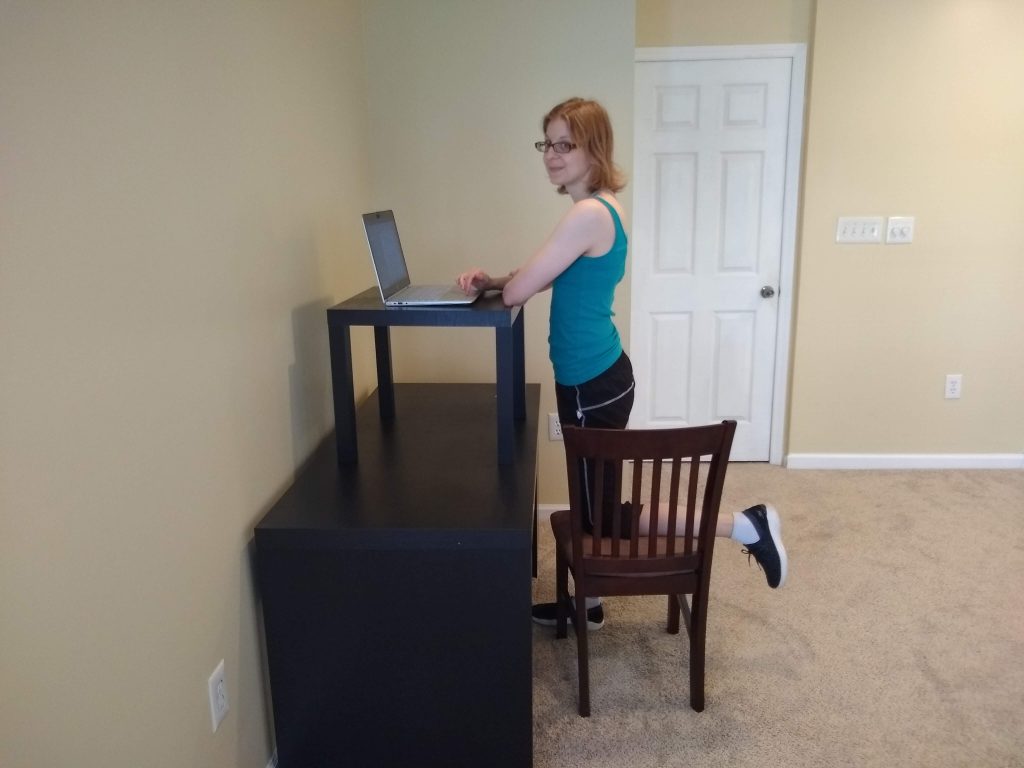
The final arrangement works nicely for me. I give it my own sitting disability stamp of approval.
